When the purple-pink waves of buckwheat flowers sweep across Ha Giang’s limestone plateaus each autumn, locals begin preparing one of northern Vietnam’s most cherished delicacies. Ha Giang’s buckwheat cake, locally known as “bánh tam giác mạch,” transforms the humble highland grain into a culinary treasure that captures both the resilience and resourcefulness of the region’s ethnic communities. This simple yet sophisticated dish offers travelers a taste of Ha Giang’s cultural identity, connecting visitors to centuries-old traditions through flavors found nowhere else in Vietnam.
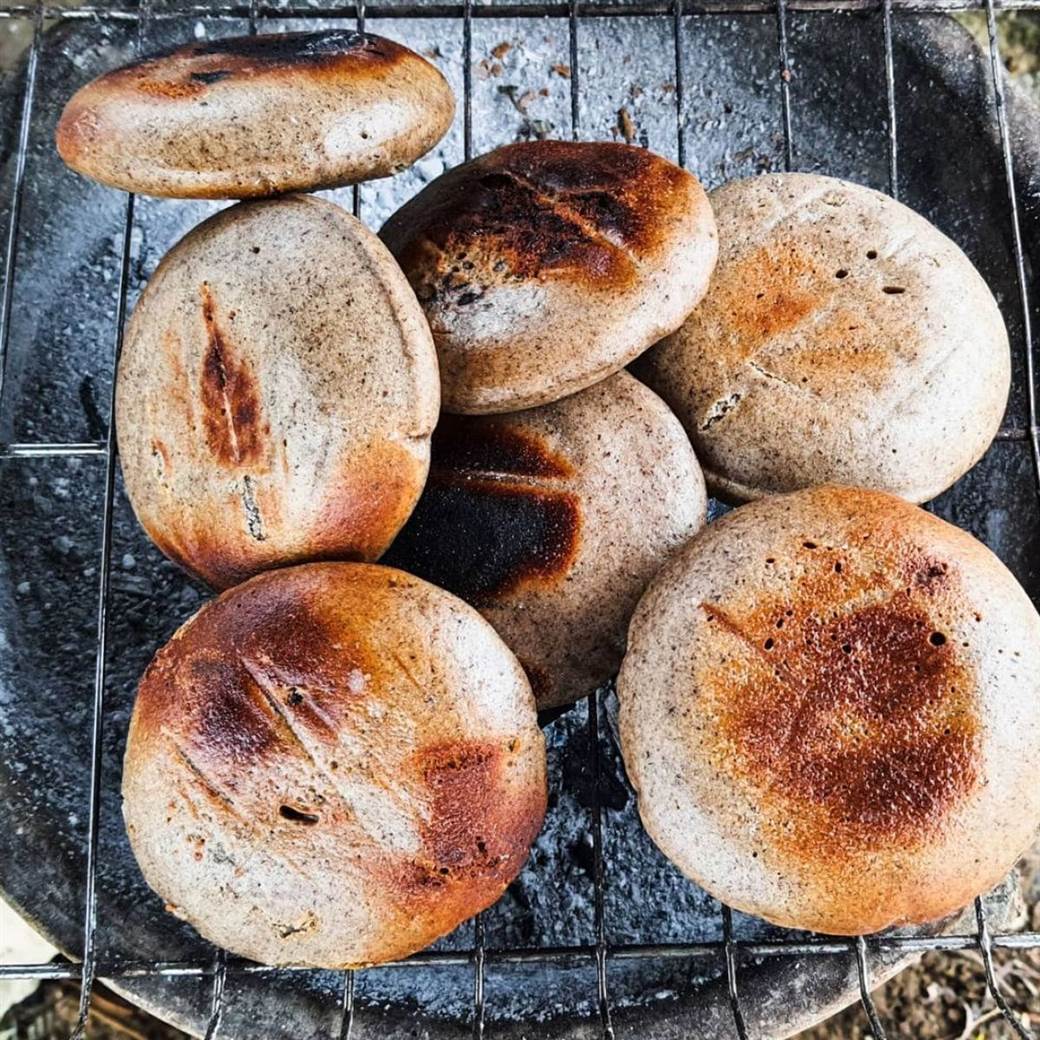
1. What is Ha Giang’s Buckwheat Cake?
Ha Giang’s buckwheat cake is a traditional delicacy made from buckwheat flour, a staple grain cultivated by ethnic minorities in Vietnam’s northernmost province. Unlike conventional wheat-based cakes, these distinctive treats feature a slightly nutty flavor, hearty texture, and a characteristic pinkish-purple hue. The cake’s appearance ranges from simple round discs to more elaborate shapes, depending on the specific ethnic group preparing them and the occasion.
At its core, buckwheat cake represents highland ingenuity transforming a resilient crop that thrives in harsh mountain conditions into a versatile food. For generations, H’mong, Dao, and other ethnic communities have relied on this grain when rice cultivation proved challenging in the rocky terrain. Today, what began as sustenance has evolved into a cultural symbol and must-try specialty for visitors exploring the famed Ha Giang Loop.
1.1 Key Ingredients & Nutritional Value
The primary ingredient in authentic Ha Giang buckwheat cake is, of course, buckwheat flour, ground from the seeds of flowering buckwheat plants that carpet the region’s mountains each autumn. Despite its name, buckwheat isn’t related to wheat at all but belongs to the Polygonaceae family, making it naturally gluten-free. This nutritional powerhouse contains high-quality protein, essential amino acids, and significant amounts of manganese, magnesium, copper, and dietary fiber.
Traditional recipes typically combine buckwheat flour with water and a pinch of salt, forming a simple dough that highlights the grain’s natural flavor. Some variations incorporate additional ingredients like peanuts, sesame seeds, or honey to enhance texture and taste. Modern interpretations might include glutinous rice flour to create a more elastic texture, though purists often prefer the classic version’s distinctive grainy consistency and earthy flavor profile.
The nutritional profile of buckwheat cakes makes them particularly valuable in the highland diet. They provide sustained energy, which has historically been crucial for farmers working long days in mountainous fields. The cakes’ high mineral content supports bone health, while their fiber aids digestion. Additionally, buckwheat contains antioxidants like rutin that may help regulate blood pressure and strengthen blood vessels.
1.2 How It Differs From Other Regional Varieties
While buckwheat-based foods appear in several northern Vietnamese provinces, Ha Giang’s version stands apart through distinctive preparation techniques and cultural context. Unlike the thinner, crepe-like buckwheat pancakes found in Cao Bang or the sweeter versions in Lao Cai, Ha Giang’s buckwheat cakes have a heartier texture and more subtle flavor that complements rather than masks the grain’s natural taste.
The cooking method also sets Ha Giang’s buckwheat cake apart. While some regions prefer steaming or boiling similar dishes, Ha Giang’s ethnic minorities typically grill their cakes over open flames or on hot stones, imparting a characteristic smokiness that enriches the grain’s inherent nuttiness. This direct-heat cooking approach creates a contrast between the crisp exterior and moist interior that other regional variations rarely achieve.
Perhaps most significantly, Ha Giang’s buckwheat cake remains deeply embedded in the province’s cultural practices rather than being primarily developed as a tourist attraction. When visiting ethnic minority villages during festival seasons, you’ll find buckwheat cakes prepared not just for visitors but as integral components of ceremonies, family gatherings, and community celebrations. This authenticity of purpose infuses each cake with cultural significance beyond mere culinary appeal.
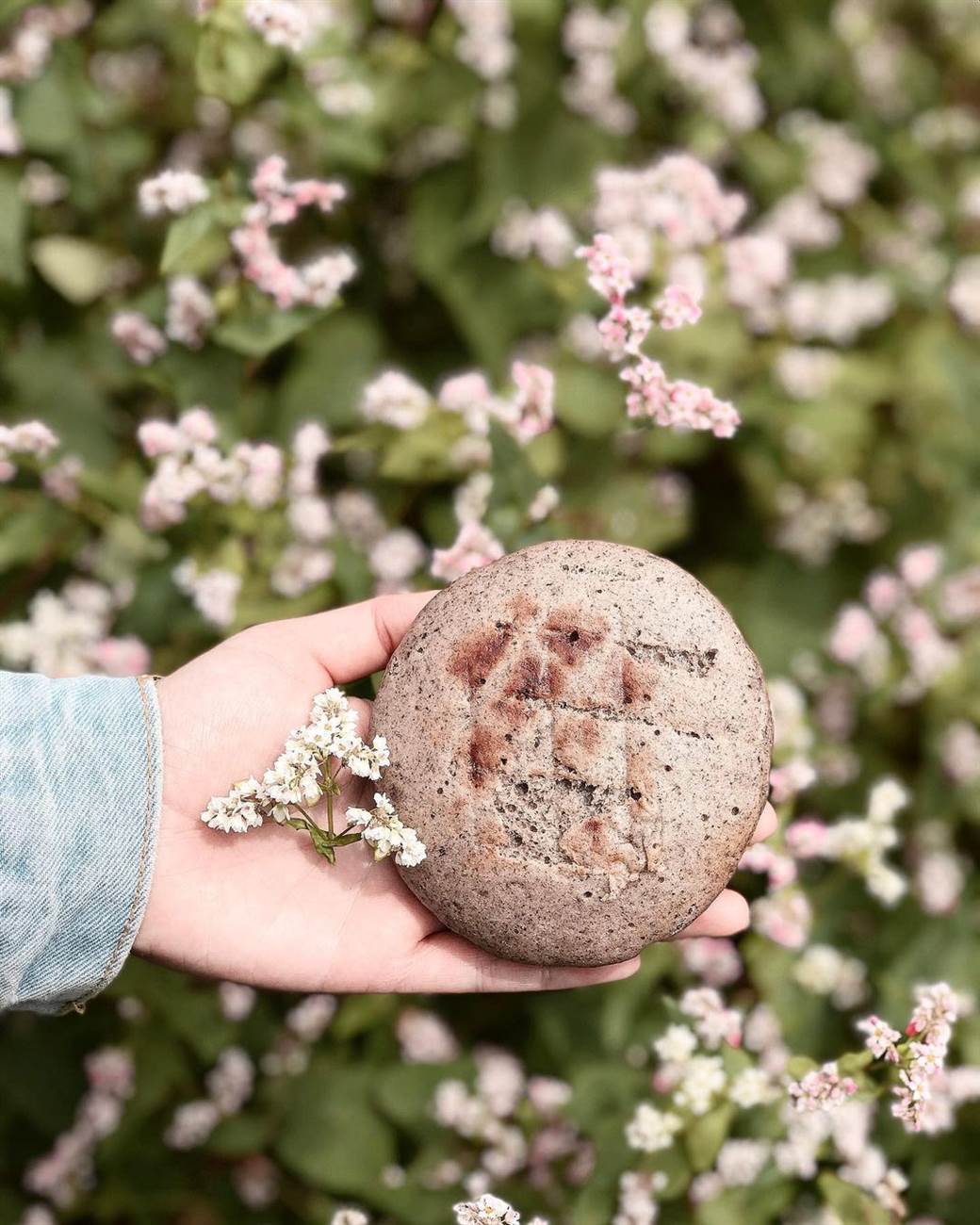
2. History and Cultural Significance
The story of Ha Giang’s buckwheat cake begins centuries ago, when highland farmers sought crops that could withstand the harsh mountain conditions. Buckwheat, with its ability to grow in poor, rocky soil and resistance to drought, became an essential lifeline when rice harvests failed. This resilient plant gradually transformed from mere survival food to cultural cornerstone, representing the adaptability and resourcefulness of Ha Giang’s people.
Historical accounts suggest buckwheat cultivation began in Vietnam’s northern highlands during migrations from southern China, particularly among H’mong communities. As these groups settled in Ha Giang’s challenging landscape, they brought agricultural techniques specifically adapted to mountainous terrain. The resulting food traditions, including buckwheat cakes, became expressions of cultural identity that persisted through generations despite economic changes and increased integration with lowland Vietnamese culture.
Today, buckwheat fields and their derivative foods represent a living museum of highland agricultural practices. The cycle of planting, harvesting, processing, and preparing buckwheat connects modern Ha Giang residents to their ancestors’ ingenuity. For visitors from Phieu Travel exploring the region, sampling these cakes offers more than culinary adventure – it provides a tangible connection to centuries of highland history and the enduring relationship between people and their environment.
2.1 Origins in Ha Giang’s H’Mong Communities
The H’Mong people, who constitute a significant portion of Ha Giang’s population, have particularly strong connections to buckwheat cultivation and cake-making traditions. Anthropological research indicates that when H’Mong groups migrated from China to northern Vietnam between the 17th and 19th centuries, they brought buckwheat seeds and cultivation knowledge as essential survival tools. The crop’s 10-12 week growing cycle made it particularly valuable, allowing harvests even during shortened growing seasons at high elevations.
H’Mong oral histories often reference buckwheat as a “lifesaving grain” during times of hardship. Families would process harvested buckwheat by hand, removing the hard outer hull, grinding the seeds using stone mills, and preserving the resulting flour for year-round use. The cakes became staple foods during winter months when fresh produce was scarce, providing critical nutrition during the harshest season in the mountains.
Within H’Mong villages, knowledge of buckwheat cake preparation has traditionally passed from mothers to daughters through hands-on practice rather than written recipes. This generational knowledge transfer embedded cultural values of resourcefulness and adaptability within the seemingly simple act of cake-making. Many elderly H’Mong women can still recount learning to prepare buckwheat cakes as young girls, often beginning around age seven or eight, when they were deemed old enough to help with family cooking duties.
2.2 Symbolism and Festival Connections
Beyond daily sustenance, buckwheat cakes feature prominently in H’mong and Dao ceremonies throughout Ha Giang province. During important celebrations like New Year (Tet), weddings, and coming-of-age rituals, specially prepared buckwheat cakes symbolize prosperity, resilience, and community connection. The circular shape of traditional cakes represents family unity and the continuous cycle of agricultural seasons so central to highland life.
In some communities, buckwheat cakes play specific roles in spiritual practices. During ancestor worship ceremonies, freshly made cakes are arranged on family altars as offerings to departed relatives, believed to maintain connections between the living and ancestral spirits. The smoke from grilling cakes is sometimes considered a medium through which prayers travel upward, carrying the community’s hopes for good harvests and protection from natural disasters.
Perhaps most visibly to visitors, buckwheat cakes feature prominently during Ha Giang’s Buckwheat Flower Festival, typically held in October and November when fields bloom in pink and purple waves across the province. This relatively recent festival (formalized in 2015) celebrates both the visual spectacle of flowering fields and the culinary traditions surrounding the plant. Local families proudly display their cake-making skills, often inviting visitors to participate in preparation processes that have remained largely unchanged for generations.
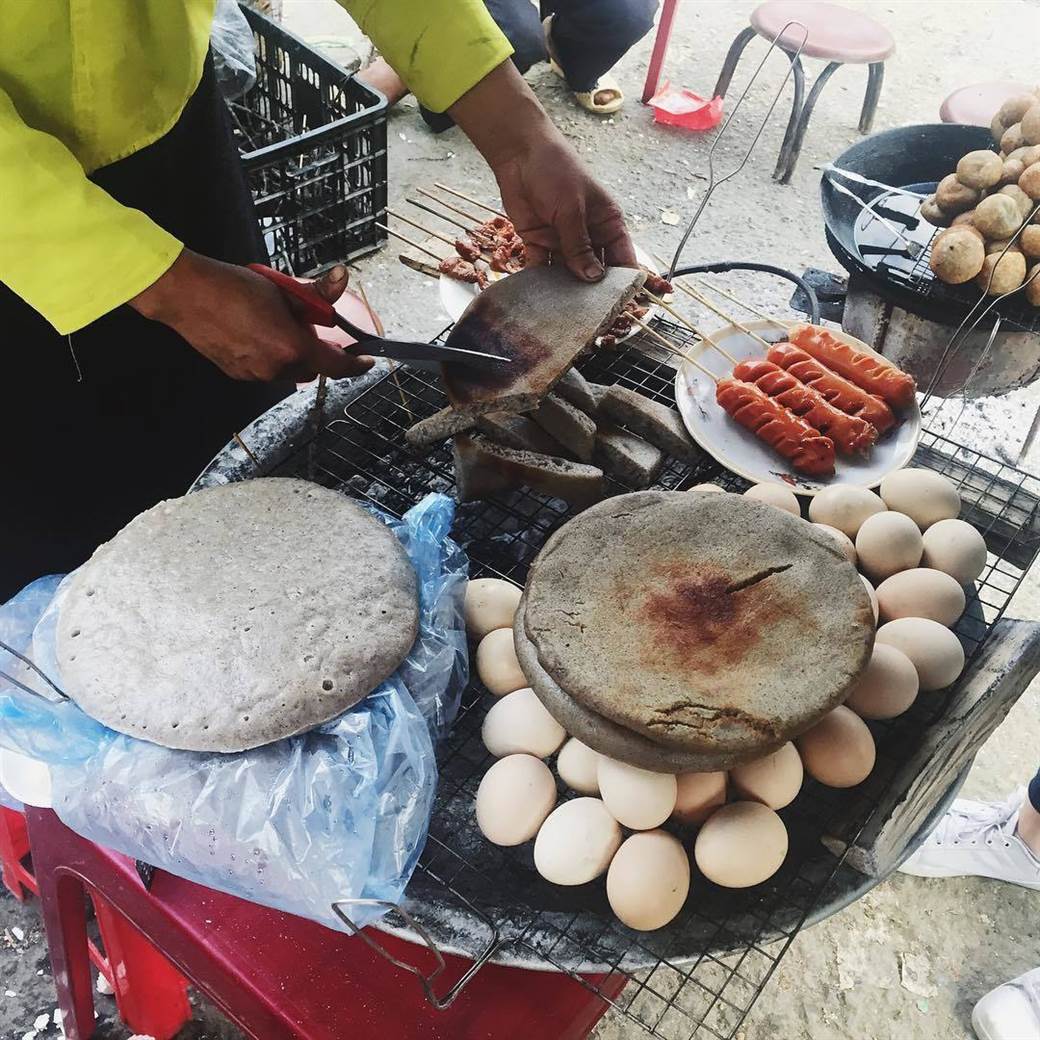
3. Best Time and Places to Try Buckwheat Cake in Ha Giang
The ideal time to experience authentic Ha Giang buckwheat cake coincides with the region’s most visually spectacular season. From mid-October through November, buckwheat flowers transform mountainsides into carpets of pink and purple blooms, creating the perfect backdrop for culinary exploration. During this period, freshly harvested buckwheat yields the most flavorful cakes, and many families prepare batches daily for both household consumption and eager visitors.
This timing also aligns with Ha Giang’s Buckwheat Flower Festival, when communities showcase their cultural heritage through performances, demonstrations, and food preparation. The festive atmosphere enhances the cake-tasting experience, allowing travelers to understand the broader cultural context while enjoying freshly made treats. Weather conditions during these months cool, dry days with clear visibility also make exploring Ha Giang’s remote villages more pleasant and accessible.
For travelers unable to visit during peak season, buckwheat cakes remain available year-round, though the experience differs slightly. Winter visits (December-February) offer the advantage of fewer tourists and the opportunity to see how buckwheat products sustain communities through the coldest months. Spring and summer travelers might miss the flowering fields but can still find preserved buckwheat flour transformed into authentic cakes, particularly at established restaurants catering to the growing tourism market along the Ha Giang Loop.
3.1 Buckwheat Flower Season (Where/When)
The most spectacular displays of buckwheat flowers typically appear in Quan Ba, Yen Minh, Dong Van, and Meo Vac districts. The flowering season begins earliest at lower elevations (around late September) and gradually spreads to higher regions through November. Dong Van Karst Plateau Geopark, with its limestone landscapes contrasting against pink-purple fields, offers particularly photogenic settings for buckwheat flower viewing combined with culinary experiences.
Timing varies slightly each year depending on weather patterns, with ideal viewing typically peaking in late October. Local farmers stagger their planting schedules, meaning different fields bloom at slightly different times, extending the overall season. During this period, makeshift food stalls frequently appear along popular routes, offering freshly made buckwheat cakes to travelers exploring the flowering landscapes.
For photographers and food enthusiasts seeking the perfect combination of visual and culinary experiences, Phieu Travel recommends early morning visits to buckwheat fields. The soft morning light enhances the flowers’ colors while providing opportunities to observe local families harvesting grain. Some farmers welcome respectful visitors to their fields, sometimes offering impromptu demonstrations of traditional harvesting techniques that have remained largely unchanged for generations.

3.2 Local Markets vs. Homestays vs. Tours
Ha Giang’s weekly markets provide excellent opportunities to sample authentic buckwheat cakes while observing local commerce. Dong Van Market (Sundays), Meo Vac Market (Sundays), and Quan Ba Market (Saturdays) all feature food stalls selling freshly prepared cakes. These bustling markets bring together various ethnic groups, creating a vibrant atmosphere where visitors can sample different regional variations side by side and purchase buckwheat flour to take home.
Homestays throughout Ha Giang province offer more immersive buckwheat cake experiences. Many family-run accommodations include traditional meals featuring buckwheat dishes, with some hosts offering cooking demonstrations upon request. Particularly recommended are homestays in Lung Tam Village (known for textile traditions alongside food culture) and Nam Dam Village, where guests can participate in harvesting, processing, and cooking buckwheat alongside their hosts.
Specialized culinary tours provide the most comprehensive buckwheat experiences for serious food enthusiasts. Phieu Travel’s guided tours include visits to buckwheat fields, processing facilities, and cooking workshops with local chefs or family cooks. These curated experiences often access private homes and kitchens not typically open to independent travelers, providing deeper insights into preparation techniques and cultural contexts that casual market visits might miss.
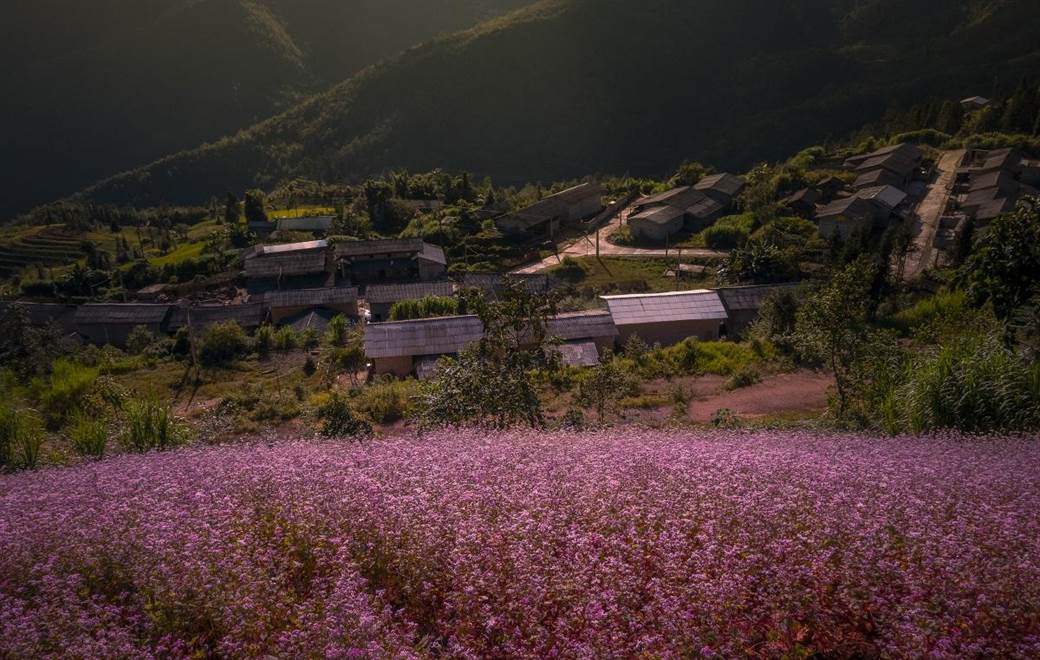
4. Step-by-Step Guide to Making Buckwheat Cake
Creating authentic Ha Giang buckwheat cakes requires few ingredients but considerable technique developed through generations of highland cooking traditions. While the recipe seems deceptively simple, achieving the perfect texture and flavor balance demands attention to detail and respect for traditional methods. The following guide combines insights from Ha Giang’s experienced cake makers with adaptations that make the process accessible to home cooks unfamiliar with highland techniques.
The fundamental process begins with high-quality buckwheat flour, ideally stone-ground for authentic texture. This is mixed with water to form a thick, slightly sticky dough that must be properly kneaded to develop structure without becoming tough. Traditional cooks judge consistency through touch rather than precise measurements, developing an intuition for when the dough reaches the perfect balance between firmness and pliability.
While equipment needs remain minimal, preparation requires patience and practice. The dough must rest briefly to allow flour particles to fully hydrate before shaping and cooking. Each cooking method grilling, steaming, or frying produces distinctly different textures and flavor profiles, allowing for versatility that has helped buckwheat cakes remain relevant through changing culinary trends and preferences across generations of highland communities.
4.1 Traditional vs. Modern Methods
Traditional buckwheat cake preparation begins with hand-harvesting mature plants, then threshing to separate seeds from stems and leaves. After removing the inedible black hulls, seeds are stone-ground into fine flour using granite mills powered by hand or water. This labor-intensive process yields flour with distinctive texture and flavor profiles that modern commercial processing often fails to replicate.
The most authentic cooking method involves grilling shaped dough on hot stones placed directly in cooking fires. The stones’ porous surface creates unique browning patterns while allowing moisture to escape gradually, developing complex flavors through slight caramelization. Home cooks in highland villages typically use cast iron pans as a practical alternative, though many elderly residents maintain that stone-grilled cakes taste noticeably superior.
Modern adaptations have made buckwheat cake preparation more accessible to both urban Vietnamese and international cooks. Pre-packaged buckwheat flour (available in Ha Giang markets and increasingly in specialty stores internationally) eliminates the most labor-intensive steps. Electric griddles and non-stick pans provide more consistent cooking temperatures than traditional fires, though purists argue this standardization comes at the cost of the subtle smokiness that characterizes authentic versions.
4.1.1 Steaming, Grilling, Frying Techniques
Steaming produces the softest texture and most delicate flavor profile among buckwheat cake cooking methods. Dough portions are typically placed on banana leaves inside bamboo steamers over boiling water for 15-20 minutes. This gentle cooking preserves buckwheat’s subtle nutty notes while creating a tender, slightly chewy consistency. Steamed cakes often serve as foundations for sweet toppings like honey or condensed milk.
Grilling the most traditional approach develops deep flavors through direct heat contact. Flattened dough rounds cook on hot stones, cast iron surfaces, or modern griddles for approximately 3-4 minutes per side. Successful grilling requires maintaining the perfect heat balance: too hot causes exterior burning before the interior cooks; too cool produces pale, doughy cakes lacking proper flavor development. The characteristic slight charring along edges indicates properly grilled cakes.
Frying offers the richest flavor and crispest texture, though it represents a relatively modern adaptation. Thin dough rounds dropped into hot oil puff dramatically, creating cakes with crisp exteriors and airy centers. While less common in home cooking, fried versions have gained popularity in tourist areas and restaurants seeking to create more indulgent interpretations of traditional foods. Some contemporary cooks stuff dough with sweet or savory fillings before frying, creating fusion versions that maintain buckwheat’s distinctive taste while introducing new textural experiences.
4.2 Tips for Home Cooks
Achieving authentic texture requires proper flour-to-water ratios, though exact measurements vary based on flour coarseness and ambient humidity. Start with approximately 2 cups buckwheat flour to 1 cup water, adding additional water one tablespoon at a time until the dough holds together without being sticky. Kneading thoroughly (7-10 minutes) develops necessary structure while incorporating ingredients evenly throughout the dough.
Temperature control critically affects final quality regardless of cooking method. For grilling or pan-frying, medium heat works best, allowing thorough cooking without scorching. Test readiness by sprinkling a few drops of water on the cooking surface; proper temperature causes immediate sizzling without rapid evaporation. Maintain consistent heat throughout cooking, adjusting as needed to compensate for thermal changes as multiple batches are prepared.
Flavor enhancements respect traditional profiles while accommodating personal preferences. A pinch of salt accentuates buckwheat’s natural nuttiness, while small amounts of honey or palm sugar introduce subtle sweetness without overwhelming. For special occasions, incorporate freshly ground black sesame seeds (approximately 1 tablespoon per cup of flour) to add complexity and visual interest with minimal disruption to authentic texture and cooking behavior.
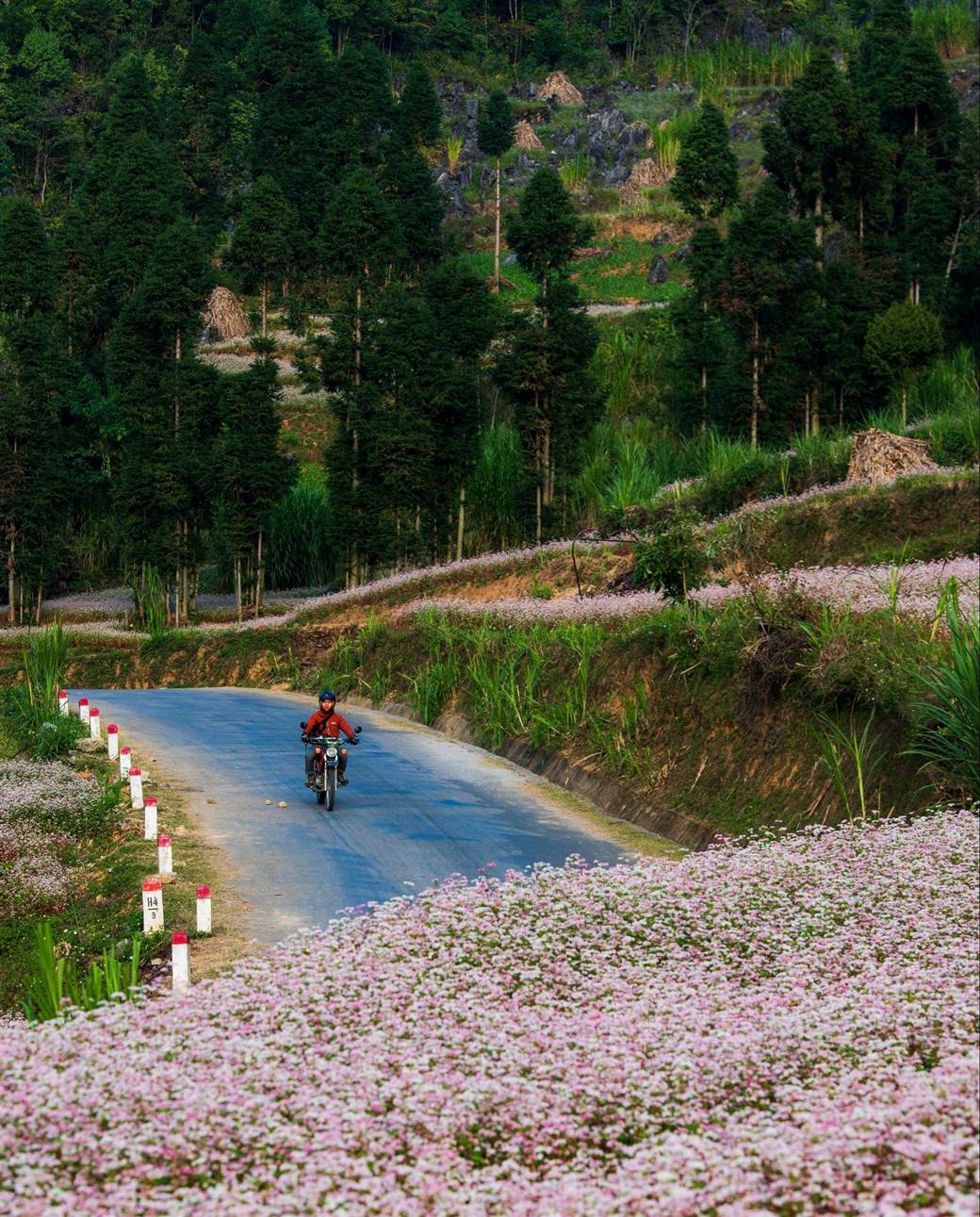
What to Pack for the Ha Giang Loop (Ultimate Packing Guide 2025)
5. How to Eat and Serve Buckwheat Cake
Traditional Ha Giang families typically enjoy buckwheat cakes as versatile meal components rather than isolated treats. The cakes appear at breakfast alongside strong mountain tea, serve as quick midday energy boosters during farm work, or complement evening meals as starchy alternatives to rice. This integration into daily eating patterns reflects buckwheat’s historical importance as both staple and comfort food in highland communities.
Serving temperature significantly impacts the eating experience. Fresh from cooking, warm cakes showcase buckwheat’s aromatic qualities and most complex flavor notes. Room-temperature cakes develop firmer texture and more pronounced grain character. Some elderly residents even enjoy day-old cakes, claiming the flavors deepen and mature overnight similar to certain breads and fermented foods.
For visitors seeking authentic experiences, Phieu Travel recommends following local customs by eating with clean hands rather than utensils. Break small pieces from the cake’s edge, dipping into accompanying sauces or using them to scoop up other dishes. This tactile approach connects modern travelers to centuries of highland dining traditions while allowing appreciation of the cake’s textural nuances that might be missed when using forks or chopsticks.
5.1 Local Pairings and Drinks
Mountain honey represents the most traditional accompaniment to Ha Giang’s buckwheat cakes, particularly for breakfast or afternoon snacks. The honey’s floral sweetness balances buckwheat’s earthy notes while adding moisture to drier cake varieties. Local beekeepers produce distinctive varieties from flowers including buckwheat blossoms themselves, creating perfectly matched flavor profiles when drizzled over warm cakes.
Savory pairings often include locally-made chili sauces prepared with forest herbs and fermented bean pastes. These robust condiments complement heartier grilled or fried cake variations, particularly when served alongside ethnic minority dishes like thắng cố (H’mong-style meat stew) or smoked pork. Some families prepare special buckwheat-specific dipping sauces combining fermented soybeans, mountain herbs, and garlic for complex umami flavors.
Beverage pairings reflect Ha Giang’s distinctive drink culture, with strong green tea being the most common traditional accompaniment. The tea’s slight bitterness cuts through the cake’s substantial texture while cleansing the palate between bites. For special occasions, corn wine (rượu ngô) often appears alongside buckwheat cakes, its warming alcohol content and slight sweetness creating balance with the grain’s earthy character. Visitors particularly enjoy this pairing during cool autumn evenings when temperatures drop in the highlands.
5.2 Taste and Texture Profile
Ha Giang’s buckwheat cake presents a distinctive flavor profile combining nuttiness, earthiness, and subtle sweetness. The initial taste impression features mild grainy notes reminiscent of whole wheat but with distinctive minerality unique to buckwheat. As chewing continues, subtle sweeter undertones emerge, particularly in fresh, properly cooked specimens. The aftertaste lingers pleasantly with hints of walnut-like complexity that makes the cakes satisfying despite their apparent simplicity.
Texture varies significantly depending on preparation method. Properly made traditional cakes offer a compelling contrast between slightly crisp exteriors and moist, tender interiors with discernible grain particles providing gentle resistance. This textural complexity elevates the eating experience beyond mere sustenance, creating memorable mouthfeel that distinguishes authentic versions from less skillfully prepared imitations sometimes found in tourist-oriented establishments.
Many first-time tasters remark on buckwheat cake’s surprising complexity given its minimal ingredients. The flavor develops and changes during consumption, with different notes becoming prominent as the cake moves from front to back of the palate. This evolving sensory experience explains why the simple food has maintained cultural importance beyond mere nutrition it provides satisfaction beyond caloric content, connecting eaters to Ha Giang’s distinct terroir and agricultural traditions.
6. Visitor Stories and FAQs
Travelers consistently rank buckwheat cake experiences among their most vivid Ha Giang memories. One Phieu Travel guest described watching an elderly H’mong woman prepare cakes over an open fire as “a masterclass in culinary minimalism transforming just flour and water into something deeply satisfying through perfect technique.” These encounters often become centerpieces of travel narratives, representing moments when cultural understanding transcends language barriers through shared appreciation of food traditions.
Photographers particularly value buckwheat-related experiences for capturing authentic daily life. Unlike staged cultural performances, cake preparation happens organically throughout Ha Giang communities, offering glimpses into genuine domestic routines. Many visitors report that their most treasured travel images feature local families gathering around cooking fires, sharing freshly made cakes with neighbors, or teaching children traditional preparation techniques.
For culinary enthusiasts, sampling regional variations across different Ha Giang districts often becomes an informal scavenger hunt during their journey. These travelers develop increasingly refined appreciation for subtle differences between villages and ethnic groups, noting how altitude, local ingredient availability, and family traditions influence flavor profiles. This progressive understanding transforms simple food tasting into a nuanced exploration of cultural geography across the province’s diverse communities.
6.1 Why Visitors Love It
Many travelers cite the perfect marriage of simplicity and depth as buckwheat cake’s primary appeal. In an era of increasingly complex fusion cuisines and elaborate presentation, the straightforward nature of these highland treats offers refreshing authenticity. Visitors appreciate how the cakes require no artificial flavors, preservatives, or modern techniques to deliver satisfaction only quality ingredients and generations-refined cooking knowledge.
Cultural connection represents another major attraction. When visiting ethnic minority villages, sharing buckwheat cakes often becomes a moment of genuine hospitality transcending commercial tourism. Many Phieu Travel guests recount being spontaneously invited into family homes to try freshly made cakes, creating meaningful person-to-person interactions that remain unavailable in more developed tourist destinations where visitor-local relationships have become primarily transactional.
The visual context surrounding buckwheat cake experiences also enhances visitor appreciation. Sampling these treats amid flowering buckwheat fields or in traditional wooden homes with smoke-darkened ceilings connects the food to its environmental and cultural origins. This holistic sensory experience taste combined with landscape views, wood smoke scents, and traditional cooking sounds creates multi-dimensional memories that surpass typical food tourism encounters elsewhere in Vietnam.
6.2 Frequently Asked Questions
This section answers the most common questions travelers have about Ha Giang’s buckwheat cake, including its taste, preparation methods, seasonal availability, and where to try authentic versions. It helps visitors plan a meaningful and informed culinary experience.
What is Ha Giang’s buckwheat cake and what makes it special?
Ha Giang’s buckwheat cake is a traditional food made from buckwheat flour, water, and occasionally salt. Its specialness derives from both cultural significance and distinctive taste. The cake represents highland communities’ resilience and resourcefulness, transforming a grain that grows in harsh mountain conditions into sustaining food. Unlike rice-based Vietnamese cakes, buckwheat varieties offer nutty, complex flavors with unique textures ranging from soft and chewy to crisp, depending on preparation methods.
How is Ha Giang’s buckwheat cake traditionally prepared?
Traditional preparation begins with stone-grinding hulled buckwheat seeds into fine flour, then mixing with water to form a thick dough. After thorough kneading, the dough rests briefly before being shaped into rounds approximately 4-6 inches in diameter and half an inch thick. Most authentic versions are cooked on hot stones placed in open fires, though cast iron pans and griddles now provide common alternatives. Some variations incorporate steaming or frying, each method producing distinct textural results while maintaining buckwheat’s characteristic flavor.
When is the best season to try buckwheat cake in Ha Giang?
Mid-October through November offers the ideal combination of fresh harvest, pleasant weather, and cultural context. During this period, buckwheat flowers blanket mountainsides in pink and purple blooms, creating spectacular backdrops for culinary exploration. The annual Buckwheat Flower Festival (typically late October) features demonstrations, tasting opportunities, and cultural performances that enhance understanding and appreciation. While cakes remain available year-round, autumn provides the freshest ingredients and most vibrant cultural setting for authentic experiences.
What does buckwheat cake taste like and how do locals enjoy it?
The flavor profile combines earthiness, nuttiness, and subtle mineral notes with gentle sweetness developing during proper cooking. Texture typically features a satisfying contrast between slightly crisp exterior and tender, grainy interior. Locals traditionally enjoy buckwheat cakes in various ways: plain as breakfast or snack items; drizzled with mountain honey for sweeter variations; dipped in spicy sauces as savory treats; or alongside meat dishes during more substantial meals. Strong green tea or corn wine typically accompanies the cakes, balancing flavors and enhancing digestibility.
Where can I buy authentic buckwheat cake when visiting Ha Giang?
Authentic cakes are available at weekly markets in major district towns, particularly Dong Van and Meo Vac (Sundays) and Quan Ba (Saturdays). Roadside stalls along popular sections of the Ha Giang Loop, especially near buckwheat fields during flowering season, offer freshly made versions. Many homestays prepare cakes for guests upon request, sometimes including demonstration opportunities. For guaranteed quality and cultural context, specialized culinary tours through reputable operators like Phieu Travel provide access to skilled cake makers in traditional settings, often including homes not typically open to independent travelers.
Is buckwheat cake healthy or gluten-free?
Buckwheat cake offers several nutritional advantages. Despite its name, buckwheat isn’t related to wheat but belongs to a different plant family, making traditional versions naturally gluten-free (though those with celiac disease should verify no wheat flour has been added, which occasionally happens in commercial settings). The cakes provide complete protein containing all essential amino acids, substantial fiber, and significant levels of minerals including manganese, copper, and magnesium. Their relatively low glycemic index makes them suitable for balanced energy release, historically important for sustaining highland farmers through long workdays in mountainous fields.
Ha Giang’s buckwheat cake represents far more than simple sustenance it embodies the resilience, resourcefulness, and rich cultural heritage of Vietnam’s northern highlands. From its origins as essential survival food to its current status as cultural ambassador, this humble creation connects visitors to centuries of highland traditions through flavors found nowhere else. Each bite tells a story of adaptation to challenging environments and the transformation of necessity into culinary art.
For travelers seeking authentic connections to Ha Giang’s communities, buckwheat cake experiences offer unique windows into daily life beyond tourist attractions. Whether joining a grandmother grinding flour by hand, watching deft fingers shape dough into perfect rounds, or sharing freshly grilled cakes with local families, these moments often become cherished memories that transcend language barriers and cultural differences.
As you plan your journey through Vietnam’s spectacular northern province, consider including dedicated time for buckwheat exploration. Phieu Travel specializes in creating meaningful cultural experiences that balance respect for traditions with visitor accessibility. Our guides can arrange authentic cooking demonstrations, visits to family producers, and tastings across different villages to showcase regional variations. Discover the full spectrum of Ha Giang experiences, including its remarkable buckwheat cake traditions, by exploring our specialized cultural tours at phieutravel.com.
Read more:
- Au Tau Porridge: Ha Giang’s Nighttime Delicacy You Must Try
- Best Ha Giang Loop Travel Insurance Guide 2025
- Ha Giang Loop in January: Complete Weather, Travel & Packing Guide for 2025

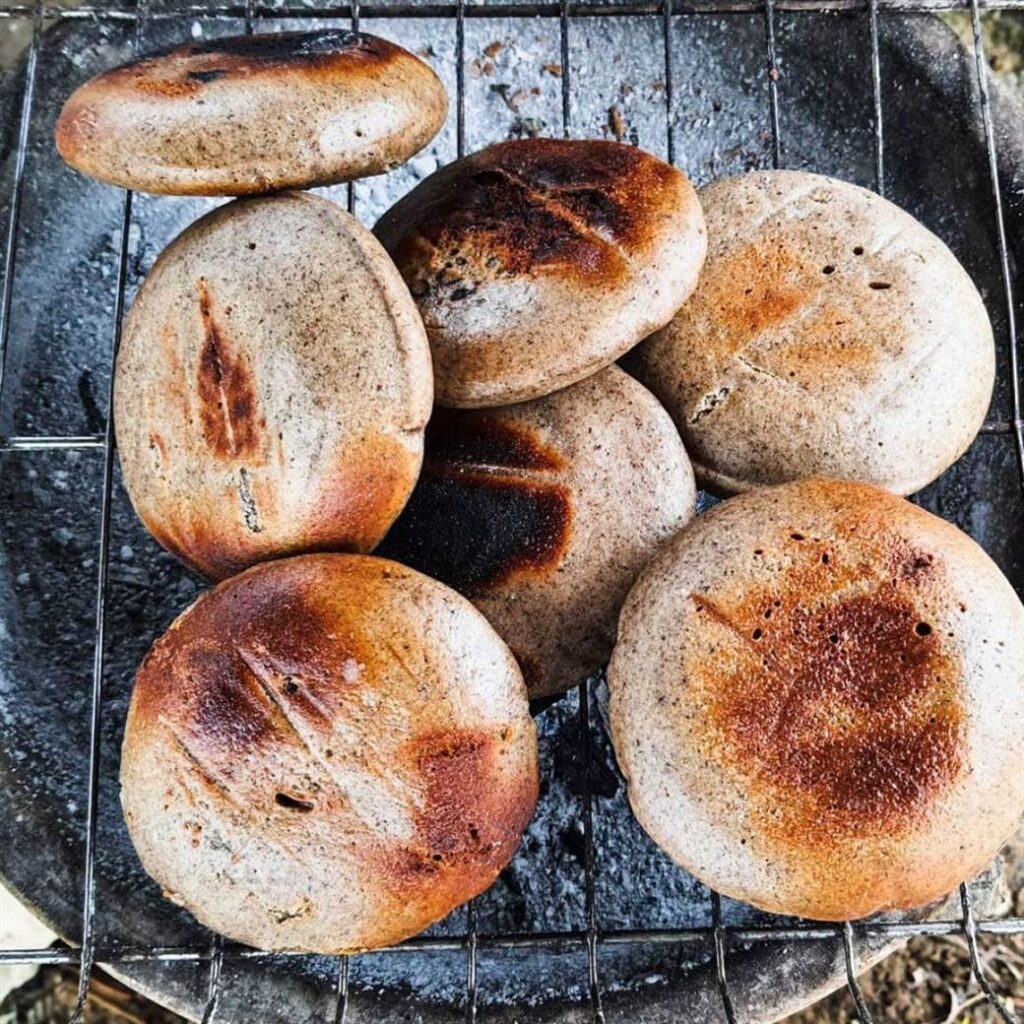
You Might Also Like
Ha Giang Weather in September: Complete Guide for Travelers
Exploring the magnificent Ha Giang Loop in September offers travelers a perfect balance of favorable[...]
Quan Ba Twin Mountains: Ha Giang’s Iconic Fairy Hills and Complete Travel Guide
The mystical Quan Ba Twin Mountains rise from the emerald valleys of Ha Giang like[...]
Vuong family mansion: the architectural marvel and cultural legacy of Ha Giang
Deep in Vietnam’s northern highlands, where mist-shrouded mountains meet terraced rice fields, stands a testament[...]
Ha Giang Loop Safety Tips: How to Ride Securely in Vietnam’s Northern Mountains
The Ha Giang Loop, with its winding mountain roads and breathtaking landscapes, offers one of[...]
The Ultimate Guide to the M-Shaped Curve on Ha Giang Loop
Vietnam’s remote northern province of Ha Giang hides a natural wonder that has captivated adventurous[...]
Most Beautiful Places to Visit in Vietnam: Essential Destinations and Insider Tips
Vietnam captivates travelers with its stunning landscapes, rich cultural heritage, and warm hospitality. From mist-shrouded[...]
Beyond the Beaten Path: Discovering Ha Giang Province in Northeast Vietnam
Ha Giang Province in Northeast Vietnam stands as one of the country’s last frontiers for[...]
Rainy season in Ha Giang: what to expect, when to go, and travel tips
Vietnam’s northern frontier reveals a different face during the rainy season, transforming Ha Giang’s limestone[...]